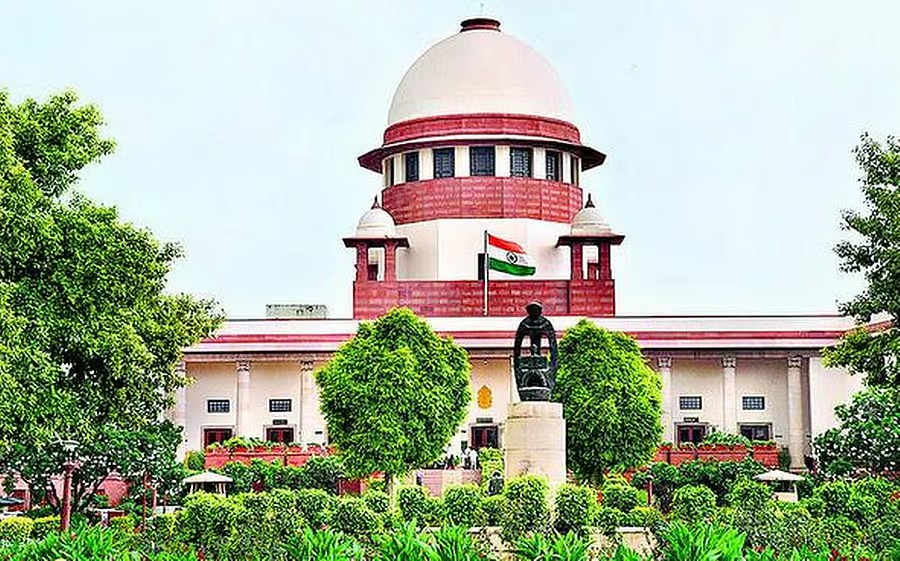1. This Appeal is directed against an order under sec. 42 of the Provincial Insolvency Act. The circumstances under which the order has been made are no in controversy and may be briefly stated. On the 26th May 1909, the Appellant made an application to be declared an insolvent, inasmuch as he had been arrested in execution of a decree. The order for adjudication was made on the 24th August 1009, and the insolvent was directed, pending realisation by sale of his assets existent or suspected, to pay Rs. 25 a month into Court until the sum realised from him should equal one third of the family debts for which the creditor had obtained a decree. It is plain that this direction could not have been given under the provisions of the Provincial Insolvency Act. In fact, on the 24th February 1910, the District Judge recorded an order to the effect that the amount deposited by the insolvent should remain in deposit and that the insolvent should show cause why the adjudication should not be annulled on the ground that the proper order would have been an order for composition under sec. 27 ; at the same time he expressed a doubt, whether the Court had power to order instalments from pay after an order of adjudication had been made. On the 11th April 1910, he ordered that as the insolvent had failed to abide by the condition that he should pay one-fourth of his salary to the Receiver, the order of adjudication must be annulled. We are now invited to hold that this order for annulment was erroneously made. There is no room for serious controversy that the order could not have been made under sub-sec. (1) of sec. 42 of the Provincial Insolvency Act. Sub-sec. (1) provides that where, in the opinion of the Court, the debtor ought not to have been adjudged an insolvent, the Court shall, on the application of the debtor or of any other person interested, by order in writing annul the adjudication. The order can also be made if it is proved to the satisfaction of the Court that the debts of the insolvent have been paid in full or that a composition or scheme has been approved by the Court under sec. 27. In the case before us, the debts of the insolvent have not been paid in full, nor has there been any composition or scheme approved by the Court. Consequently the order can be supported, only if it is established that the debtor should not have been adjudged an insolvent. But it is plain that the debtor was rightly adjudged an insolvent. He had been arrested in execution of a decree and had applied to be adjudged an insolvent. Under the circumstances the order for adjudication was property made and it could not be annulled under sub-sec. (1) of sec. 42. The position consequently is that the order of annulment made on the 11th April 1910 must be set aside.
2. The question next arises, what further direction, if any, should be given in this matter. On behalf of the insolvent, it has been contended that the order now under appeal is the erroneous order of the 11th April 1910, and that it is competent to the Court to set aside that order alone. In our opinion it is open to the Court, not only to reverse that order, but also to consider what direction should be given when the order has been set aside at the instance of the insolvent. As already explained, the order for adjudication was properly made on the 24th August 1909 ; but the condition, which was annexed to that order, was imposed with out jurisdiction ; consequently that condition must be discharged.
3. It is desirable to point out in this connection that the proper course for the District Judge would have been to direct the Receiver to arrange for payment to him of one-half of the salary earned by the insolvent. Sec. 16, sub-sec. (2), cl. (a) provides that when an order for adjudication has been made, the whole of the property of the insolvent, except so far as it includes such properties as are exempted by the CPC or by any other enactment for the time being in force from liability to attachment, shall vest in the Court or in the Receiver and shall become divisible amongst his creditors. Now sec. 60 of the CPC of 1908 provides that one-half of the salary of a public officer is exempt from attachment when the salary exceeds Rs. 40 a month. In the present case, it has been stated to us that the insolvent is in receipt of a salary of Rs. 100 a month as a clerk in the office of the Official Assignee. Consequently, under sec. 60 one-half of his salary is liable to attachment, and, therefore, one-half of the salary is vested in the Receiver appointed by the Court under sec. 16, sub-sec. (2), cl. (a). There can be no room for reasonable doubt that "salary" is "property" of the insolvent within the meaning of sec. 16, sub-sec. (2), clause (a) : this view accords with that adopted in England under the Bankruptcy Act, as is evident from the cases of Re Ward [1897] 1 Q. B. 266, Mercer v. Vans Colina [1900] 1 Q. B. 130n (1897) and Re Graydon [1896] 1 Q. B. 417. It has been explained that in making an appropriation of income for the benefit of creditors, the Court acts on the principle of giving to the creditors the surplus after allowing sufficient portion thereof for his proper maintenance according to his condition in life. The Statute law in this country fixes this amount by sec. 60, C. C. P., read with sec. 16, sub-sec. (2) of the Provincial Insolvency Act. The result is that this appeal is allowed, the order of the nth April 1910 set aside and the order of the 24th August 1909 modified in so far as it directed the insolvent to pay into Court Rs. 25 a month, until the sum realised from him should equal one-third of the family debts. The District Judge will now give the necessary directions in accordance with the law as explained in this judgment, and subject to the provisions of sec. 44 of the Provincial Insolvency Act, which entitles him to make an order of discharge of the insolvent under defined circumstances. There will be no order for costs either here or in the Court below.

